Posted by Md. Kamrul Hussain March 17, 2015
Title: Total Player Monitoring
By: Md. Kamrul Hussain
Project Category: Design Challenge
Project Name: Sudden Impact Wearables Design Challenge
Blog post: 04
Intro:
It’s my fourth blog post in the Sudden Impact Wearables Design Challenge. Last couple of months was a bit hard for me. Got stuck with other stuffs and could not manage enough time to carry on this deign challenge. However, I am back again.
In this blog post I’ll be presenting the analysis of the ECG signals I have got from the Analog Front End, AD8232.
Setup:
Image of the full setup - Analog Front End AD8232 and Electrodes -
Conventional Ag-AgCl electrodes were used for this experiment.
Supply and Isolation -
The Breadboard circuit is to provide the required 3.3v supply from a 6v battery and the opto isolation circuitry to observe the signal onto a scope without connecting it’s GND with the AFE. This keeps the signal clean from noise and also provides the minimum medical safety.
ECG output:
The captured ECG signal from AD8232 displayed on TBS1202B scope with 250msec time scale. The signal was inverted due to the use of opto isolator. By inverting the scope input I got the conventional output.
Output analysis:
The output of the AD8232 was taken as the Fast Response switch was disabled.
With enabling the Fast response switch I got an output almost similar to the previous one.
If I compare the output of AD8232, with the primary AFE designed by me then I can observe some differences.
This was the output of the primary AFE. It shows that the AD8232 is missing detail information in the signal. Like the P-wave is flatten and the whole T-wave is superimposed with the 50Hz noise.
May be that’s because of the filter bandwidth. In my design I had captured in between a range of 0.3Hz to 159Hz where AD8232 limits the low pass far below 50Hz to get rid of common noise. However, this won’t be necessary as it’s not for diagnostic purpose. I just need to get the heart rate with single LEAD ECG, so it’s pretty good enough. Moreover, AD8232 produces a better, sharp QRS complex which will be more helpful.
However, AD8232 responded effectively for removing motion artifacts. For general movement, it maintains the output signal pretty good. But for fast strong movements or contraction of the muscle the signal gets distorted. I have to check it's performance over motion artifacts once again after mounting it on human body.
All the outputs of the AD8232 is presented inversely because of the opto-isolator. The original output without isolator looks like below, where the 50Hz noise is added from oscilloscope.
Spectrum view:
Fast response:
With fast response enabled, the output was restored almost immediately after reconnecting the LEAD. With fast response disabled, the output becomes steady after about 0.5 to 1.5 seconds.
Shutdown:
The shutdown feature works perfectly.
image: Shutdown is turned on. image: Signal restored after shutdown is turned off
LEAD off detection:
Unfortunately, the LOD+/- didn’t perform as I thought. I placed the switch into DC position and removed one LEAD. I was expecting something like a digital high/low output swing. But when the LEAD was taken off the LOD output started oscillating.
In my next blog I’ll try to post the full circuit for detecting the heart rate from the ECG signal.

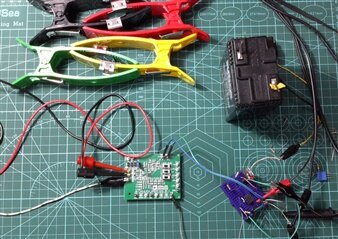
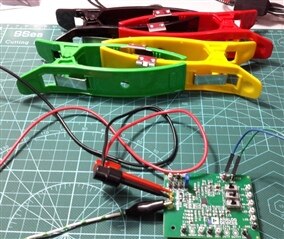
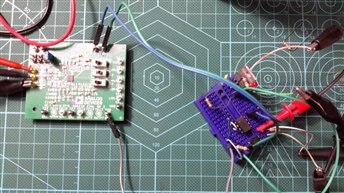
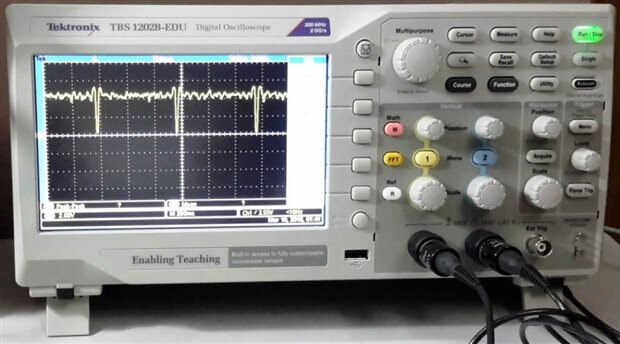
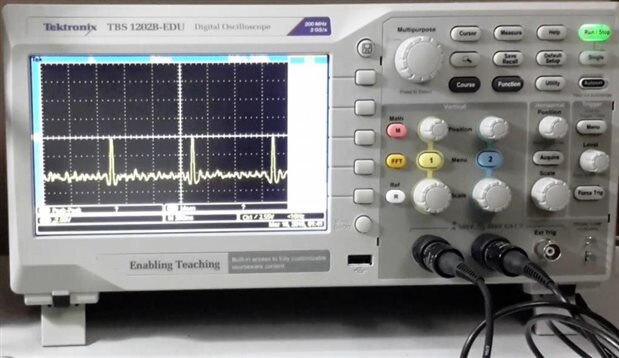
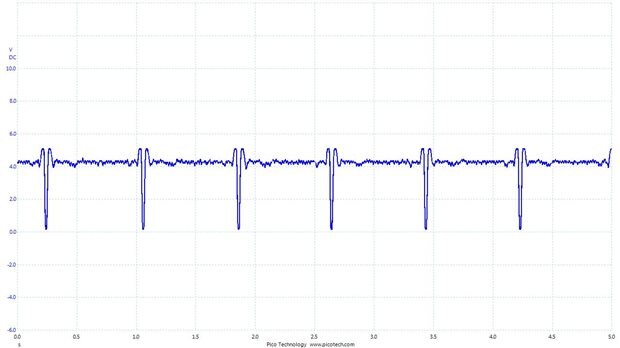
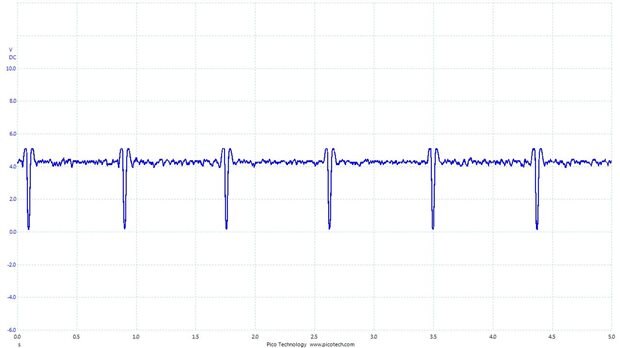
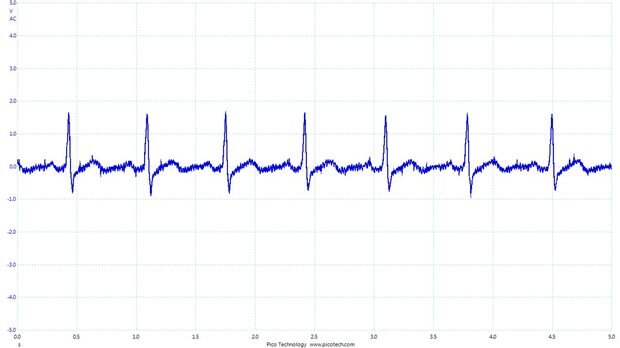
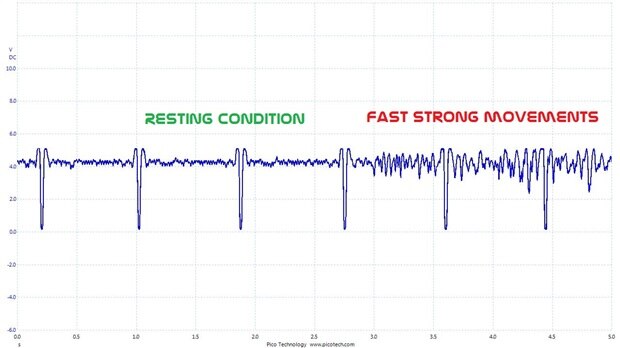
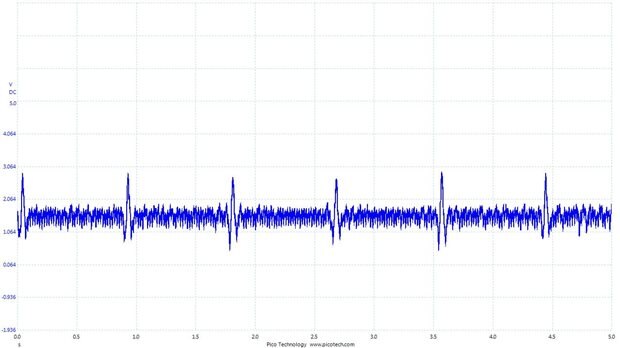
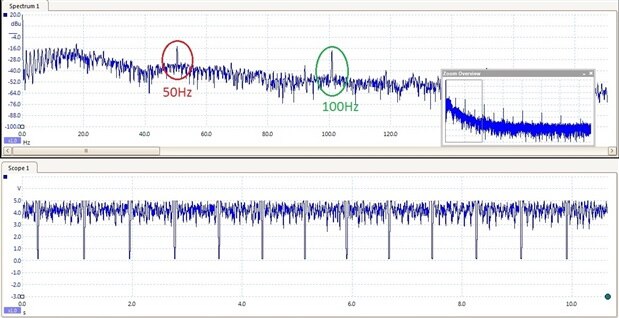
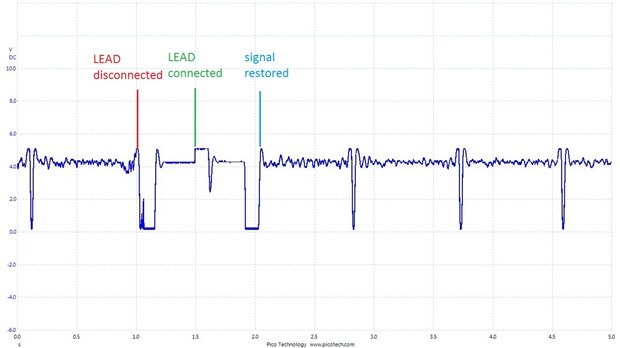
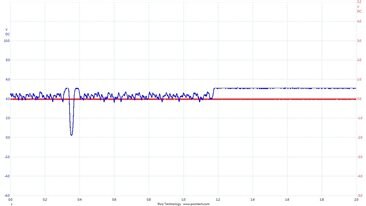
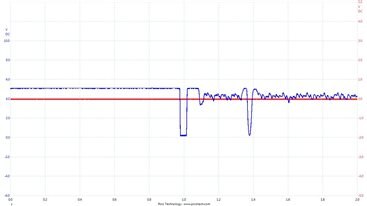
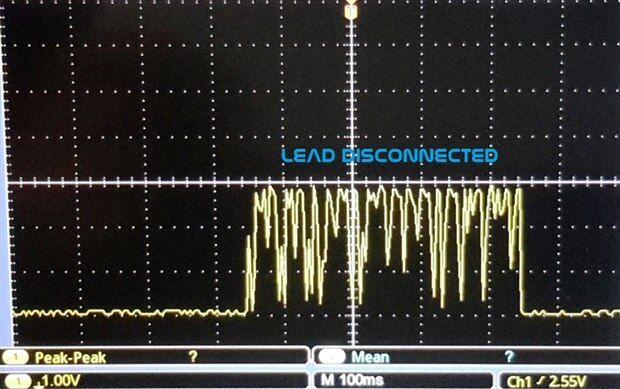
Top Comments
-

ravi_butani
-
Cancel
-
Vote Up
0
Vote Down
-
-
Sign in to reply
-
More
-
Cancel
-

sunnyiut
in reply to ravi_butani
-
Cancel
-
Vote Up
0
Vote Down
-
-
Sign in to reply
-
More
-
Cancel
-

ravi_butani
in reply to sunnyiut
-
Cancel
-
Vote Up
0
Vote Down
-
-
Sign in to reply
-
More
-
Cancel
Comment-

ravi_butani
in reply to sunnyiut
-
Cancel
-
Vote Up
0
Vote Down
-
-
Sign in to reply
-
More
-
Cancel
Children